4-Channel Fiber-Coupled Laser Source
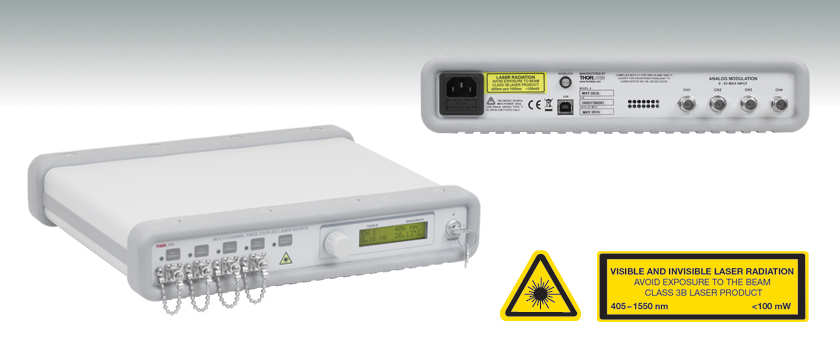
- 4 Laser Output Channels with FC/PC Connectors
- TEC and Controller for Each Channel
- Stable, Low Noise Output
- 31 Power/Wavelength Options Available
MCLS1-CUSTOM
View of Back Panel

Please Wait
Features
- 4 Laser Output Channels with FC/PC Connectors
- Independent Temperature Control Gives High Temperature Stability
- Low Noise Output
- USB Interface
- Low-Profile Package, 2.5" (64 mm) Tall
- 31 Wavelength/Power Options Available (See Table Below for Details)
Thorlabs' 4-Channel, Fiber-Coupled, Customizable Laser Source provides easy coupling and simple control of laser-diode-driven fiber optics. The laser source is configured to accept the fiber-pigtailed laser diodes shown below. This selection of diodes has discrete wavelengths in the spectral range from 406 - 1550 nm, and can be placed in the source in any combination. The laser source allows more than one channel to be turned on simultaneously; however, it is only possible to adjust the power output of one at a time from the front panel.
Each laser diode is operated from an independent, high-precision, low-noise, constant-current source and temperature control unit. An intuitive LCD interface allows the user to view and set the laser current and temperature independently for each laser. The display indicates the channel number selected, the output wavelength of the source, the operating power calculated from the laser diode monitor diode (if applicable), and the actual temperature to which the laser is set.
This device incorporates a microcontroller to fully control the laser's optical power and temperature as well as to monitor the system for fault conditions. The laser source includes a USB connection that allows remote enabling, power adjustment, and temperature adjustment. On the rear panel, analog inputs are available to modulate the laser diodes' outputs with an externally generated waveform. To prevent damage, the microcontroller will disable the output if the sum of the analog input and internal set point exceeds the laser limits.
Thorlabs also offers the MCLS2-CUSTOM 4-channel, fiber-coupled, customizable source with additional wavelength and superluminescent diode (SLD) options. The MCLS2-CUSTOM source also features a touchscreen interface and a modulation bandwidth of 200 kHz.
Safety
While most output sources fall within the class 3R laser rating, the system was fully designed to meet laser class 3B requirements. There is an interlock located on the rear panel that must be shorted in order for any laser output to be enabled. This can easily be configured to be triggered by doors to disable the lasers in unsafe conditions. The power switch is a keylock system to prevent accidental or unwanted use. Each source has its own enable button allowing the user to choose the light source or sources he wishes to be active, as well as a master enable that must also be set. Each channel includes a green LED indicator to easily determine its current state. There is a 3 second delay before the lasers turn on, and the user is warned by the LED rapidly blinking. The laser must be turned off before connecting or disconnecting a fiber to the output ports, particularly for powers above 10 mW.
In the Box
The MCLS1-CUSTOM includes a universal power supply allowing operation over 100 - 240 VAC without the need for selecting the line voltage. The fuse access is conveniently located on the rear panel. This unit is supplied with a region-specific U.S. or standard European line cord, the pre-configured laser source with all selected lasers installed, and the manual.
Below is a list of available lasers listed by wavelength and showing the corresponding minimum output power and pigtail fiber type. To discuss potential custom wavelengths and configurations not available below, please contact Tech Support. Please use the configurator below to select the pigtails and locations you would like.
Note: An MCLS1-CUSTOM unit must be purchased with at least one pigtail installed, and the channels of the unit must be filled in order. In other words, a laser for Channel 1 must be selected before a laser for Channel 2, Channel 2 before Channel 3, and Channel 3 before Channel 4. If you leave a subsequent channel blank, then the unit will be shipped without a laser in that channel. Subsequent empty channels can be filled by Thorlabs at a later date. Please contact Tech Support prior to sending your unit back to us.
The laser diodes below are not available for purchase separately from the MCLS1-CUSTOM laser source; for users who would like to purchase a fiber-coupled laser diode separately, we offer a wide selection of pigtailed laser diodes in TO-can and butterfly packages.
| Diode Name | Typical λ | Wavelength Range | Minimum Powera | Typical Power | Laser Type | Monitor Photodiodeb | Fiber |
|---|---|---|---|---|---|---|---|
| MCLS1-406 | 406 nm | 395 - 415 nm | 4.0 mW | 6.0 mW | Fabry-Perot | Yes | S405-XP |
| MCLS1-473-20 | 473 nm | 468 - 478 nm | 15.0 mW | 20 mW | Fabry-Perot | Yes | 460HP |
| MCLS1-488 | 488 nm | 483 - 493 nm | 18.0 mW | 22 mW | Fabry-Perot | Yes | 460HP |
| MCLS1-520A | 520 nm | 510 - 530 nm | 10.0 mW | 15.0 mW | Fabry-Perot | Yes | 460HP |
| MCLS1-635 | 635 nm | 630 - 640 nm | 2.5 mW | 3.5 mW | Fabry-Perot | Yes | SM600 |
| MCLS1-638 | 638 nm | 628 - 648 nm | 10.0 mW | 15.0 mW | Fabry-Perot | Yes | SM600 |
| MCLS1-642 | 642 nm | 635 - 645 nm | 15.0 mW | 20.0 mW | Fabry-Perot | Yes | SM600 |
| MCLS1-658 | 658 nm | 648 - 668 nm | 9.5 mW | 14.0 mW | Fabry-Perot | Yes | SM600 |
| MCLS1-660 | 660 nm | 653 - 663 nm | 15.0 mW | 17.0 mW | Fabry-Perot | No | SM600 |
| MCLS1-670 | 670 nm | 660 - 680 nm | 1.5 mW | 2.5 mW | Fabry-Perot | Yes | SM600 |
| MCLS1-670-4 | 670 nm | 660 - 680 nm | 4.0 mW | 5.0 mW | Fabry-Perot | Yes | SM600 |
| MCLS1-685 | 685 nm | 675 - 695 nm | 10.0 mW | 13.5 mW | Fabry-Perot | Yes | SM600 |
| MCLS1-705 | 705 nm | 695 - 715 nm | 10.0 mW | 15.0 mW | Fabry-Perot | Yes | SM600 |
| MCLS1-730 | 730 nm | 720 - 740 nm | 12.5 mW | 15.0 mW | Fabry-Perot | Yes | SM600 |
| MCLS1-785 | 785 nm | 770 - 800 nm | 6.0 mW | 7.5 mW | Fabry-Perot | Yes | 780HP |
| MCLS1-785-25 | 785 nm | 780 - 790 nm | 20.0 mW | 25.0 mW | Fabry-Perot | No | 780HP |
| MCLS1-808-20 | 808 nm | 803 - 813 nm | 20.0 mW | 25.0 mW | Fabry-Perot | Yes | SM800-5.6-125 |
| MCLS1-830 | 830 nm | 820 - 840 nm | 8.0 mW | 10.0 mW | Fabry-Perot | Yes | SM800-5.6-125 |
| MCLS1-850 | 850 nm | 840 - 860 nm | 7.5 mW | 10.5 mW | Fabry-Perot | Yes | SM800-5.6-125 |
| MCLS1-850-MM | 850 nm | 847 - 857 nm | 45.0 mW | 50.0 mW | Fabry-Perot | Yes | GIF625 |
| MCLS1-852 | 852 nm | 847 - 857 nm | 20.0 mW | 25.0 mW | Fabry-Perot | Yes | SM800-5.6-125 |
| MCLS1-915 | 915 nm | 910 - 920 nm | 30.0 mW | 40.0 mW | Fabry-Perot | Yes | SM800-5.6-125 |
| MCLS1-940 | 940 nm | 930 - 950 nm | 25.0 mW | 30.0 mW | Fabry-Perot | Yes | SM800-5.6-125 |
| MCLS1-980 | 980 nm | 965 - 995 nm | 6.0 mW | 9.0 mW | Fabry-Perot | Yes | 980HP |
| MCLS1-1064 | 1064 nm | 1059 - 1069 nm | 20.0 mW | 25.0 mW | Fabry-Perot | Yes | HI1060 |
| MCLS1-1310-15 | 1310 nm | 1290 - 1330 nm | 13.0 mW | 15.0 mW | Fabry-Perot | No | SMF-28e+ |
| MCLS1-1310DFB | 1310 nm | 1290 - 1330 nm | 1.5 mW | 2.0 mW | DFB | Yes | SMF-28e+ |
| MCLS1-1550 | 1550 nm | 1520 - 1580 nm | 1.5 mW | 2.0 mW | Fabry-Perot | Yes | SMF-28e+ |
| MCLS1-1550-10 | 1550 nm | 1530 - 1570 nm | 8.0 mW | 10.0 mW | Fabry-Perot | No | SMF-28e+ |
| MCLS1-1550DFB | 1550 nm | 1540 - 1560 nm | 1.5 mW | 2.0 mW | DFB | Yes | SMF-28e+ |
| MCLS1-1625 | 1625 nm | 1605 - 1645 nm | 10 mW | 15 mW | Fabry-Perot | No | SMF-28e+ |
| Performance Specifications | |
|---|---|
| Display Power Accuracy | ±10% |
| Current Set Point Resolution | 0.01 mA |
| Laser Drive Current per Channel (Max) | 120 mA |
| Temperature Adjust Range | 20.00 to 30.00 °C |
| Temp Set Point Resolution | ±0.01 °C |
| Noise | <0.5% Typical (Source Dependent) |
| Rise/Fall Time | <5 µs |
| Modulation Input | 0 - 5 V = 0 - Full Power |
| Modulation Bandwidth | 80 kHz Full Depth of Modulation |
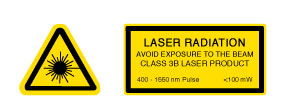
| General Specifications | |
|---|---|
| AC Input | 100 - 240 VAC, 50 - 60 Hz |
| Input Power | 35 VA Max |
| Fuse Ratings | 250 mA |
| Fuse Type | IEC60127-2/III (250V, Slow Blow Type 'T') |
| Fuse Size | 5 mm x 20 mm |
| Dimensions (W x H x D) | 12.6" x 2.5" x 10.6" (320 mm x 64 mm x 269 mm) |
| Weight | 8.5 lbs (3.9 kg) |
| Operating Temperature | 15 to 35 °C |
| Storage Temperature | 0 to 50 °C |
| Connections and Controls | |
| Interface Control | Optical Encoder with Pushbutton |
| Enable and Laser Select | Keypad Switch Enable with LED Indication |
| Power On | Key Switch |
| Fiber Ports | FC/PC |
| Display | LCD, 16x2 Alphanumeric Characters |
| Input Power Connection | IEC Connector |
| Modulation Input Connector | BNC (Referenced to Chassis) |
| Interlock | 2.5 mm Mono Phono Jack |
| Communications | |
| Communications Port | USB 2.0 |
| Com Connection | USB Type B connector |
| Required Cable | 2 m USB Type A to Type B Cable (Replacement Part Number USB-A-79) |
For in-depth operation instructions, please view the operating manual. A printed copy of this manual is included with each MCLS1-CUSTOM Laser Source.
Viewing Information
Thorlabs' Multi-Channel Laser Source (MCLS) uses a single four quadrant LCD display to access the information for each output channel (see photo to the right for details). Rotate the control knob to the left of the display to scroll through the channels until the desired channel is selected. The control knob is also a select switch that allows access to the laser current and temperature parameters (see below for more information).

- Top Left: Indicates the selected channel.
- Top Right: Indicates the wavelength of the selected channel.
- Bottom Left: Indicates the power level of the laser diode output. If disabled, the power level will read "0.00 mW." If the selected diode does not include a monitor diode, this will read "No PD."
- Bottom Right: Indicates the actual temperature (in °C) that the laser is stabilized to. The default temperature is set to 25.00 °C and is user adjustable. The temperature control is always active and requires 5 to 10 minutes to properly stabilize.
Adjusting the Laser Output Power and Temperature
After selecting a channel, the output power and temperature of the selected laser can be adjusted. The control knob utilizes an intelligent speed control. Turning the knob slowly corresponds to fine adjustment while turning the knob quickly corresponds to coarse adjustment. The laser current adjustment translates to real-time adjustment of output power. The default setting upon first turning on the unit is output power fully off. Note that lasing occurs at the threshold current value, which is different for every source.
Once the desired channel is selected, the Laser Current and Temperature parameters can be adjusted by pressing the control knob in. Pressing in the knob once will select the Laser Current, pressing it a second time will select the Temperature Set Point, and pressing it a third time will revert back to the display mode and lock the selected parameters. The parameter to be adjusted is indicated with blinking text. The resolution is 0.1 mA for the current adjustment and 0.01 °C for the temperature adjustment.
Modulating the Laser Output
The Analog In input can be used to modulate the laser output or to set the laser output remotely using a 5 V power source. The 5 V maximum input corresponds to the maximum calibrated power of each channel. The resulting actual output power is dependent on the set current and operating temperature. In addition, in order to eliminate a dead zone in the power control knob, the output of the unit is offset to the threshold current of the coupled laser diode. Adjusting the knob below threshold will immediately set the current to 0.0 mA (i.e., Standby mode). Therefore, there are two modes of modulation available. Setting the control to "Standby" first allows the analog modulation to utilize the full 0 to 5 V input range. The drawback to this modulation mode is that a minimum voltage is needed to operate above the threshold current. The second mode is to adjust the control knob so that the laser is at or above threshold. The analog modulation voltage will be limited to less than 5 V, but a DC offset will not be required. This DC offset should be kept in mind when using the modulation input since it will limit the actual input voltage range.
Making the Safety Interlock Connections
The MCLS series of laser sources are equipped with a remote interlock connector located on the rear panel. All units have this feature regardless of their FDA and IEC classifications. In order to enable the MCLS source, a short circuit must be applied across the terminals of the Remote Interlock connector. In practice this connection is made available to allow the user to connect a remote-actuated switch to the connector (i.e., an open door indicator). The switch (which must be normally open) has to be closed in order for the unit to be enabled. Once the switch is in an open state, the MCLS source will automatically shut down. If the switch returns to a closed condition, the MCLS source must be re-enabled at the unit by pressing the "Master Enable" switch.

Interlock Mating Connector
| Specification | Value |
|---|---|
| Type of Mating Connector | 2.5 mm Mono Phono Jack |
| Open Circuit Voltage | +5 VDC with Respect to Chassis Ground |
| Short Circuit Current | ~8 mA DC |
| Connector Polarity | Tip is +5 V, Barrel is Ground |
| Interlock Switch Requirementa | Must be Normally Open Dry Contacts |
Laser Safety and Classification
Safe practices and proper usage of safety equipment should be taken into consideration when operating lasers. The eye is susceptible to injury, even from very low levels of laser light. Thorlabs offers a range of laser safety accessories that can be used to reduce the risk of accidents or injuries. Laser emission in the visible and near infrared spectral ranges has the greatest potential for retinal injury, as the cornea and lens are transparent to those wavelengths, and the lens can focus the laser energy onto the retina.
Safe Practices and Light Safety Accessories
- Laser safety eyewear must be worn whenever working with Class 3 or 4 lasers.
- Regardless of laser class, Thorlabs recommends the use of laser safety eyewear whenever working with laser beams with non-negligible powers, since metallic tools such as screwdrivers can accidentally redirect a beam.
- Laser goggles designed for specific wavelengths should be clearly available near laser setups to protect the wearer from unintentional laser reflections.
- Goggles are marked with the wavelength range over which protection is afforded and the minimum optical density within that range.
- Laser Safety Curtains and Laser Safety Fabric shield other parts of the lab from high energy lasers.
- Blackout Materials can prevent direct or reflected light from leaving the experimental setup area.
- Thorlabs' Enclosure Systems can be used to contain optical setups to isolate or minimize laser hazards.
- A fiber-pigtailed laser should always be turned off before connecting it to or disconnecting it from another fiber, especially when the laser is at power levels above 10 mW.
- All beams should be terminated at the edge of the table, and laboratory doors should be closed whenever a laser is in use.
- Do not place laser beams at eye level.
- Carry out experiments on an optical table such that all laser beams travel horizontally.
- Remove unnecessary reflective items such as reflective jewelry (e.g., rings, watches, etc.) while working near the beam path.
- Be aware that lenses and other optical devices may reflect a portion of the incident beam from the front or rear surface.
- Operate a laser at the minimum power necessary for any operation.
- If possible, reduce the output power of a laser during alignment procedures.
- Use beam shutters and filters to reduce the beam power.
- Post appropriate warning signs or labels near laser setups or rooms.
- Use a laser sign with a lightbox if operating Class 3R or 4 lasers (i.e., lasers requiring the use of a safety interlock).
- Do not use Laser Viewing Cards in place of a proper Beam Trap.
Laser Classification
Lasers are categorized into different classes according to their ability to cause eye and other damage. The International Electrotechnical Commission (IEC) is a global organization that prepares and publishes international standards for all electrical, electronic, and related technologies. The IEC document 60825-1 outlines the safety of laser products. A description of each class of laser is given below:
| Class | Description | Warning Label |
|---|---|---|
| 1 | This class of laser is safe under all conditions of normal use, including use with optical instruments for intrabeam viewing. Lasers in this class do not emit radiation at levels that may cause injury during normal operation, and therefore the maximum permissible exposure (MPE) cannot be exceeded. Class 1 lasers can also include enclosed, high-power lasers where exposure to the radiation is not possible without opening or shutting down the laser. |  |
| 1M | Class 1M lasers are safe except when used in conjunction with optical components such as telescopes and microscopes. Lasers belonging to this class emit large-diameter or divergent beams, and the MPE cannot normally be exceeded unless focusing or imaging optics are used to narrow the beam. However, if the beam is refocused, the hazard may be increased and the class may be changed accordingly. |  |
| 2 | Class 2 lasers, which are limited to 1 mW of visible continuous-wave radiation, are safe because the blink reflex will limit the exposure in the eye to 0.25 seconds. This category only applies to visible radiation (400 - 700 nm). |  |
| 2M | Because of the blink reflex, this class of laser is classified as safe as long as the beam is not viewed through optical instruments. This laser class also applies to larger-diameter or diverging laser beams. |  |
| 3R | Class 3R lasers produce visible and invisible light that is hazardous under direct and specular-reflection viewing conditions. Eye injuries may occur if you directly view the beam, especially when using optical instruments. Lasers in this class are considered safe as long as they are handled with restricted beam viewing. The MPE can be exceeded with this class of laser; however, this presents a low risk level to injury. Visible, continuous-wave lasers in this class are limited to 5 mW of output power. |  |
| 3B | Class 3B lasers are hazardous to the eye if exposed directly. Diffuse reflections are usually not harmful, but may be when using higher-power Class 3B lasers. Safe handling of devices in this class includes wearing protective eyewear where direct viewing of the laser beam may occur. Lasers of this class must be equipped with a key switch and a safety interlock; moreover, laser safety signs should be used, such that the laser cannot be used without the safety light turning on. Laser products with power output near the upper range of Class 3B may also cause skin burns. |  |
| 4 | This class of laser may cause damage to the skin, and also to the eye, even from the viewing of diffuse reflections. These hazards may also apply to indirect or non-specular reflections of the beam, even from apparently matte surfaces. Great care must be taken when handling these lasers. They also represent a fire risk, because they may ignite combustible material. Class 4 lasers must be equipped with a key switch and a safety interlock. |  |
| All class 2 lasers (and higher) must display, in addition to the corresponding sign above, this triangular warning sign. |  |
|
| Posted Comments: | |
Subhrajit Mukherjee
(posted 2024-11-25 12:36:11.547) I would like to know the actual pulse period of the Laser by applying a square wave of 80KHz using a Keithley Function generator. I need to modify the duty cycles as per requirements. It may vary fro 5%-95% for 80 KHz. is it possible to generate optical pulse in that range using this system? ksosnowski
(posted 2024-11-25 01:33:05.0) Hello Subhrajit, thanks for reaching out to us. 80kHz is the Full Depth Analog Modulation bandwidth for a sinusoidal waveform. The typical modulation rise and fall times of the MCLS1 are <5us, which would unfortunately prohibit shorter pulse durations like this at 80kHz repetition rate. To preserve the sharp edges on a square waveform, one would need to extend the pulse duration to be significantly longer than the rise time and fall time of the driver. I have reached out directly to discuss your application further. Errol Korpinen
(posted 2024-04-24 09:15:30.757) Is there a way to rack mount this unit? or are there any accessible mounting holes? cdolbashian
(posted 2024-04-26 01:27:48.0) Thank you for reaching out to us with this inquiry. Unfortunately this does not have any specific mounting holes, and instead is designed as a benchtop unit. We do sell some empty rack shelves which could be used in conjunction with the MCLS unit if rack mounting is a necessity. I have contacted you to further such a discussion user
(posted 2023-10-13 06:30:06.373) Do you have similar product with multiple lasers which can be selected without reconnecting fiber? ksosnowski
(posted 2023-10-13 12:02:55.0) Thanks for reaching out to Thorlabs. We do not currently have a multi channel laser source with an internal coupler like this. Each channel uses an individually fiber-pigtailed laser diode. However depending on the specific wavelengths used there may be couplers one might use on the output channels to combine the wavelengths to a single channel. Isolators may be useful in that configuration to prevent any possible reflections between channels. ksosnowski
(posted 2023-10-13 12:02:55.0) Thanks for reaching out to Thorlabs. We do not currently have a multi channel laser source with an internal coupler like this. Each channel uses an individually fiber-pigtailed laser diode. However depending on the specific wavelengths used there may be couplers one might use on the output channels to combine the wavelengths to a single channel. Isolators may be useful in that configuration to prevent any possible reflections between channels. Chandramohan Samygounder
(posted 2023-04-11 20:38:10.443) Hello,
What is the power range of λ = 635 2.5 SM600 Fabry-Perot laser?
I mean the minimum to maximum variable power. I understand that the minimum power is the guaranteed power when the nob is set to its maximum. cdolbashian
(posted 2023-04-13 10:37:29.0) Thank you for reaching out to us with this inquiry. At the time of posting this I have reached out to you for clarification, but have not received a response. The min power spec is as you say above. This is the minimum guaranteed output. As far as a range is concerned, you would have a minimum of Zero mW, and a minimum-guaranteed maximum value listed as you see in the specs tab. Thus, in this case, the minimum range would be 0-2.5mW and you can expect 0-3.5 mW as this is the typical value. user
(posted 2023-03-02 16:01:28.08) Hello Can you comment on the ageing of laser diodes that can be mounted inthe MCLS1 ? I need to perform extensive use and wonder about the possibility to change the diodes from time to time. Is it possible ? Cost if you do it ? Can I do it myself ?
Thanks ksosnowski
(posted 2023-03-08 01:47:00.0) Hello, thanks for reaching out to Thorlabs. The lifetime of each diode is different and will depend strongly on the driving conditions like temperature. Operating at increased temperature can act as a catalyst to degradation and accelerate the aging process. We are able to replace the diode pigtails in MCLS1, we can also swap pigtails or upgrade an empty channel space, however the unit needs to return to our factory in NJ for this process. The price of replacing a channel is primarily dependent on the material cost of that specific diode. I have reached out directly to discuss this application further. Manuel Abreu
(posted 2022-09-14 17:25:05.597) can you please confirm that the lead time for the configuration:
MCLS1-Custom, 4-Channel Laser Source, TEC Stabilized, USB, Controller, €3731.954
Channel 1: λ = 406 4 S405-XP Fabry-Perot, €659.03
Channel 2: λ = 705 10.0 SM600 Fabry-Perot, €772.65
Channel 3: λ = 915 30.0 SM800-5.6-125 Fabry-Perot, €909
Channel 4: Empty
is actually 7-10 days ?
This is a critical factor for our decision
Best regards ksosnowski
(posted 2022-09-14 02:12:59.0) Hello Manuel, thanks for reaching out to Thorlabs. As these units are made to the user's selected configuration, there is always some build time when an order is placed. For future inquiries like this please reach us directly at techsupport@thorlabs.com regarding customs or sales@thorlabs.com regarding stock item lead times. I have reached out directly to discuss this configuration in further detail. Christian Haffner
(posted 2021-07-02 03:58:34.883) Could you please comment on the wavelength accuracy of the various laser options for the 1550nm or 16hundred wavlength ratne? YLohia
(posted 2021-07-02 09:38:05.0) Thank you for contacting Thorlabs. The wavelength range for all the component laser diodes can be found on Page 3 of the manual here: https://www.thorlabs.com/_sd.cfm?fileName=TTN182036-D02.pdf&partNumber=MCLS1-CUSTOM. Jeannine Knight
(posted 2021-01-11 12:33:05.38) Are the specified power outputs of each diode at the diode itself? If so, what is the coupling efficiency? For example for the 1310 nm, 2.5 mW diode, what power is actually coming out of the box into my fiber? asundararaj
(posted 2021-01-12 10:20:01.0) Thank you for contacting Thorlabs. The powers specified are the outputs from the MCLS1, which take into account the different losses at the diode-fiber interface. Atanu Bag
(posted 2020-11-11 21:42:30.047) Fiber patch cables are included with this product or we have to purchase separately? If so please recommend YLohia
(posted 2020-11-12 10:06:59.0) Fiber patch cables are not included with this product. The exact cable depends on the channel you intend to connect it with. Please refer to the cross reference table below and click on the hyperlinked fiber part number next to the appropriate laser. The fiber page that opens from that link will contain the list of all available stock patch cables that contain that fiber. If you have further questions, please feel free to email us directly at techsupport@thorlabs.com. user
(posted 2020-11-11 21:19:59.343) Hi, we are interested in generating pulsed light using 4-channel Fiber-Coupled Laser Source with 406 nm Diode (MCLSI-406). We understand by using an external Function Generator we can modulate the output till 80 kHz.
Is it possible to achieve 80 kHz modulation using Square wave input? We are curious about any distortion/lag in the output signals while using an external function generator for giving square wave input. I mean can we obtain exact square wave output (@406 nm) till 80 kHz.
Kindly let us know limitations and feasibility of the above source for our experiment. asundararaj
(posted 2020-12-04 02:11:39.0) Thank you for contacting Thorlabs. Square waves can be used with the MCLS1 however, it is still limited by the system bandwidth. This means that rise and fall time will be bandwidth limited and can be estimated by rise time = 0.35/BW. If the square wave is close to the analog bandwidth, the signal will start to distort and look like a sine wave. A square wave is a combination of the fundamental frequency and higher order secondary frequencies to create a short rise and fall edge. These secondary frequencies will be filtered out leaving just the primary frequency. In reality the square wave signal should be 10X less than the limit to produce a square wave output, in this case ~8kHz. Atanu Bag
(posted 2020-11-10 22:15:42.28) Hi,
We are interested in generating pulsed light using 4-channel Fiber-Coupled Laser Source with 406 nm Diode (MCLSI-406).
Is it possible to connect external Function Generator to modulate the output light pulse with high frequency (e.g., 1kHz and beyond). Kindly let us know limitations and feasibility of the above source for our experiment. YLohia
(posted 2020-11-11 09:45:16.0) Hello, these units are specified for 80 kHz full-depth modulation bandwidth when used with a 0 - 5 V signal from a function generator (see Specs tab). Fur further information, please refer to the "Modulating the Laser Output" section on the "Operation" tab. asundararaj
(posted 2020-12-04 01:34:55.0) Thank you for contacting Thorlabs. Square waves can be used with the MCLS1 however, it is still limited by the system bandwidth. This means that rise and fall time will be bandwidth limited and can be estimated by rise time = 0.35/BW. If the square wave is close to the analog bandwidth, the signal will start to distort and look like a sine wave. A square wave is a combination of the fundamental frequency and higher order secondary frequencies to create a short rise and fall edge. These secondary frequencies will be filtered out leaving just the primary frequency. In reality the square wave signal should be 10X less than the limit to produce a square wave output, in this case ~8kHz. Daniel Bivolaru
(posted 2020-07-24 09:58:55.24) Please add detailed product specifications. Thanks. asundararaj
(posted 2020-07-25 12:26:04.0) Thank you for your feedback. We will look into adding additional details about the individual MCLS1-CUSTOM diodes. markus.thomas.reichel
(posted 2018-09-06 11:14:30.47) Hi, I used the 1550 nm DFB option to set up a fibre based Mach-Zehnder-interferometer. For symmetric path length it worked well. For asymmetric path length (2 meter difference) the interference signal was fluctuating rapidly. I transformed the signal to the frequence spectrum and observed very high noises from 200Hz to 400Hz. It seems that this is due to wavelength fluctuations of the laser. So do you have some information about the wavelength drift of the 1550nm DFB source? YLohia
(posted 2018-10-29 01:05:16.0) Hello, thank you for contacting Thorlabs.
1. Could you please confirm your laser source is the LP1550-SAD2 inside our MCLS1 4-channel source?
2. Would it be possible for you to use a fast-sampling spectrometer (>400 Hz) to see if there are any wavelength fluctuations?
3. At what time are you taking measurements? The temperature control on the MCLS1 for example takes 5-10 minutes to properly stabilize.
4. Are you taking measurements at 25°C? Any particularly humid environment? You can try a few different operating temperatures to find a a more stable point.
5. What power and current are you operating this diode at? If operating close to the lasing threshold this may greatly affect stability.
6. Could you send a picture of your setup in case there are any other components that may be influencing the issue?
We tried reaching out to you via email to troubleshoot but we never heard back from you. philip.dumont
(posted 2018-04-12 15:35:22.383) Hi,
I am trying to model the performance of a test bed that is using:
4-Channel Fiber-Coupled Laser Source, MCLS1
as a light source. I would like to know if the output is polarized. If it is polarized, is the polarization linear or elliptical.
Thanks,
Philip Dumont YLohia
(posted 2018-04-16 10:21:51.0) Hello Philip, thank you for contacting Thorlabs. The output will be polarized, but to a random polarization state which will most likely be elliptical. The MCLS1 contains for separate laser diodes that are linearly polarized and coupled into their individual single mode fibers (non-polarization maintaining). This essentially "scrambles" the polarization and depends on any external stress imposed on the fiber as well as the ambient temperature. Thus, we cannot guarantee a specific polarization state on the output. ax1c15
(posted 2017-09-07 20:58:55.103) Dear Sir/Madam,
I have a 4-Channel Fibre-Coupled laser source.
https://www.thorlabs.com/newgrouppage9.cfm?objectgroup_id=3800
One of the channels is 808nm. What is the coherent length of the laser (~10cm?)?
Also, I have the following laser
https://www.thorlabs.com/thorproduct.cfm?partnumber=S1FC1550PM
I found out that when I increase the power more than a certain level (~0.32mW)
the beam it is not coherent anymore (I am doing interferometric experiments with modulated signals etc.).
What is the coherent length of this source?
What is happening if I overcome this power level? The coherent length changing with power? tfrisch
(posted 2017-09-26 04:14:31.0) Hello, thank you for contacting Thorlabs. Coherence length will be related to the linewidth, so for a Fabry-Perot diode at 808nm, I would expect a coherence length on the order of 0.3mm to 3mm. The optical path length for each arm should be matched to within this. As for the change of coherence with power, it is possible that either temperature or back reflections in the system are causing a change in coherence. I will reach out to you to troubleshoot this as coherence is not directly related to power. user
(posted 2017-05-25 12:41:17.697) Hey, looking for some nice laser source and this looks perfect. What is the coherence length (typical or order) of these LDs (Fabry-Perot)? Thank you! Paul nbayconich
(posted 2017-06-08 05:42:07.0) Thank you for contacting Thorlabs. The coherence length is determined by the longitudinal mode structure of the fabry perot diodes which is a function of the temperature and current of the fabry perot diode. Since the spectrum is a series of discrete narrow peaks corresponding to the cavity modes it is difficult to determine the coherence length. The typical coherence length for the fabry perot diodes will be only a few cm. I will contact you directly with more information about the coherence length of these fabry perot diodes. cbrideau
(posted 2014-04-04 18:01:53.923) Hey guys, my argon laser looks like it is about to quit and I am in the market for a replacement. The two lines we use are 488 and 457nm. I see 488 is standard, but do you offer 457, or 454nm as an option? I have seen a 454nm direct diode from other vendors and was wondering if Thor has access to this wavelength. jvigroux
(posted 2014-04-09 08:55:03.0) A resposne from Julien at Thorlabs: Thank you for your inquiry! The two wavelengths you mention could be efficiently covered using a 490nm and a 455nm. The current filters we use hwoever do not allow for simultaneous operation of those two wavelengths. In order to see if we could use another one, we would need to know all the wavelenths that would be needed in your configuration. I iwll contact you directly. antony.galea
(posted 2013-09-25 09:25:52.387) Dear Sir/Madam,
I am required to complete a laser safety survey by my organization, in which I specify the class of all devices I work with. The MCLS1 is rated as a IIIB device however, it is stated that many of the sources are class IIIR, please specify which sources are considered class IIIR/B.
In specific I am presently interested in the 473nm and 488nm sources.
Thanks jlow
(posted 2013-09-26 14:10:00.0) Response from Jeremy at Thorlabs: We will contact you directly to provide the laser class rating for your laser. sharrell
(posted 2013-01-15 17:20:00.0) Response from Sean at Thorlabs: Thank you for your feedback. We have added a download page for this driver package: http://www.thorlabs.com/software_pages/ViewSoftwarePage.cfm?Code=MCLS1, as well as a new "Software" tab on this page with a link. We will also add this page to our dowload section located under the "Services" menu at the top of the page shortly. ashaw
(posted 2013-01-15 13:33:59.307) Hello,
I can't find the CD containing the driver for my MCLS1. Is there a way to download the driver from the internet?
Thanks tcohen
(posted 2012-07-10 14:42:00.0) Response from Tim at Thorlabs: The minimum power spec references the power that can be guaranteed in an individual unit being run at the operating current. The maximum power out will be the power achieved on the operating current of an individual unit and is best represented by our typical power specification. In this case, it would be 10.5mW. lumz04
(posted 2012-07-06 02:33:48.0) hi, for each channel of laser source, I got the parameter of "Minimum Power", for example
Channel 1: MCLS1-850, ? = 850 7.5 mW SM800-5.6-125 Fabry-Perot, $385
So what is the Maximum power of this channel?
Thanks. tmorgus
(posted 2011-11-23 15:59:00.0) Any chance of getting a 535nm or similar green line on this system? I know the green laser diodes have just become available, but it would be extremely useful for microscopy to have this line available on this unit. My dream system would be 404/488/535/638nm. These would match the wavelengths commonly used on confocal microscope systems. user
(posted 2011-11-23 15:56:21.0) Response from Tyler at Thorlabs: I think that this is a great idea and the only potential hurdle I can see is that availability of a green laser diode, which I need to check on. I will contact you to get more information about your application and the power requirements for the green channel. Thank you for providing us with this product idea. cbrideau
(posted 2011-11-22 17:54:13.0) Any chance of getting a 535nm or similar green line on this system? I know the green laser diodes have just become available, but it would be extremely useful for microscopy to have this line available on this unit. My dream system would be 404/488/535/638nm. These would match the wavelengths commonly used on confocal microscope systems. bdada
(posted 2011-10-26 00:22:00.0) Response from Buki at Thorlabs:
Thank you for your feedback. We are working on getting this data and will update our website with additional data soon. rhs
(posted 2011-09-08 11:06:25.0) I would like to know the spectrum (or at the very least the linewidth) of the two 780 nm modules and of the 1064 nm module. jjurado
(posted 2011-08-01 09:58:00.0) Response from Javier at Thorlabs to md.hai: Thank you very much for contacting us! The linewidth of the laser diode used in the MCLS1-850 modules is 0.60 nm. md.hai
(posted 2011-07-29 17:27:15.0) What is the linewidth of the MCLS1-850 laser modules? Thorlabs
(posted 2010-11-30 09:11:53.0) Response from Javier at Thorlabs to kotov: There are a couple of options to consider. We could perhaps modify the firmware of the MCLS1 to integrate a trigger feature, or you could use a USB DAQ card with four analog outputs. You could provide the modulation signal this way and develop the trigger through your own application. I will contact you directly to discuss your requirements. kotov
(posted 2010-11-23 11:30:46.0) I would like to use MOD IN inputs and Ive tested manually with TTL pulse and attenuator the usable range of amplitude attenuation.
But I would like to use a USB unit with one trigger input and 4 independent amplitude modulated outputs with time width of the input signal (USB controllable). Can you recommend me what device will work for me? USB is prefferable but Ethernet, RS232, RS485 devices can be used as well.
What are limitations on the MOD IN signal pulse width? steffen.michaelis
(posted 2010-10-25 17:56:52.0) For the 4-ch fiber coupled laser source (MCLS1), is it possible to change a laser diode at a later date? Or add another channel if it is initially bought with 2-ch installed? klee
(posted 2009-12-09 14:50:05.0) A response from Ken at Thorlabs to moweirong: The highest guaranteed output power we can do is 8 mW for 658 nm and 10 mW for 785nm. moweirong
(posted 2009-12-09 14:03:12.0) Thanks, klee. Then is it possible to get a smaller optical power value around 660 nm and 780nm, like 10-20 mW? klee
(posted 2009-12-09 11:14:01.0) A response from Ken at Thorlabs to moweirong: The MCLS1 has laser pigtails inside and our typical coupling efficiency is 20%, meaning the output power at the fiber tip is only 20% of the power of the laser diode. Therefore, in order to have 30mW at the fiber output, we will need to use diodes with 150mW. Unfortunately, we do not have the laser diodes with such high power at the wavelengths that you are interested in. moweirong
(posted 2009-12-08 19:15:36.0) For this 4-ch fiber coupled laser source (MCLS1), is it possible to costomize the laser diodes so that the power at wavelength around 660 nm (or 658 nm) and 780 nm (or 785 nm) to be about 30 mW? klee
(posted 2009-09-15 12:51:29.0) A response from Ken at Thorlabs to dtmiller: You can have more than one channel turned on simultaneously. However, you can only adjust the power output one at a time. Please refer to Section 4 of the operating manual for details. dtmiller
(posted 2009-09-14 22:08:57.0) For the 4-channel fiber-coupled laser source (MCLS1), can two or more channels operate simultaneously? cyryl.abidi
(posted 2009-05-21 14:36:38.0) qd |
 Products Home
Products Home


















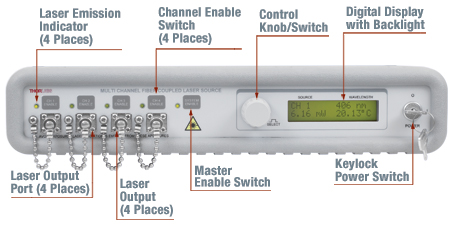
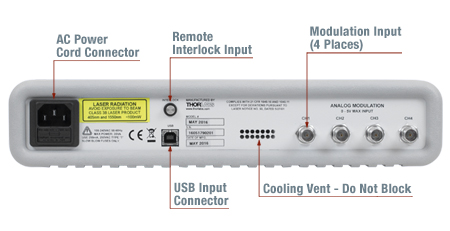
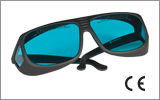
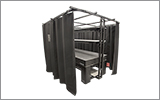
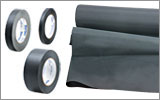
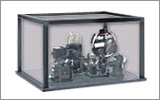
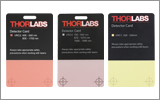
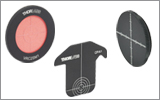
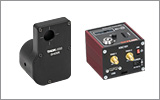
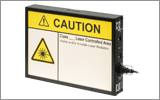
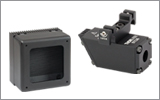



 Four Channel, Benchtop
Four Channel, Benchtop